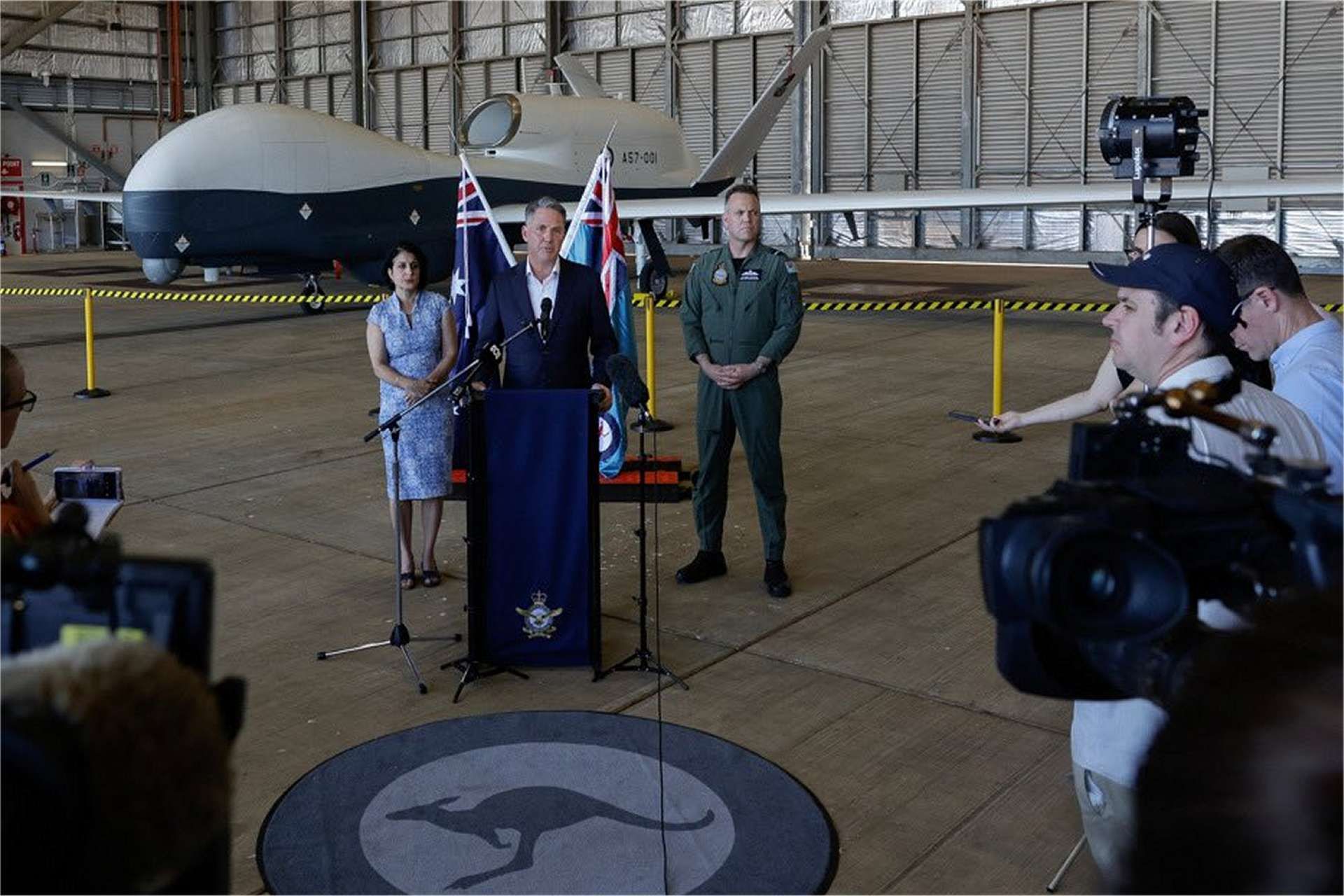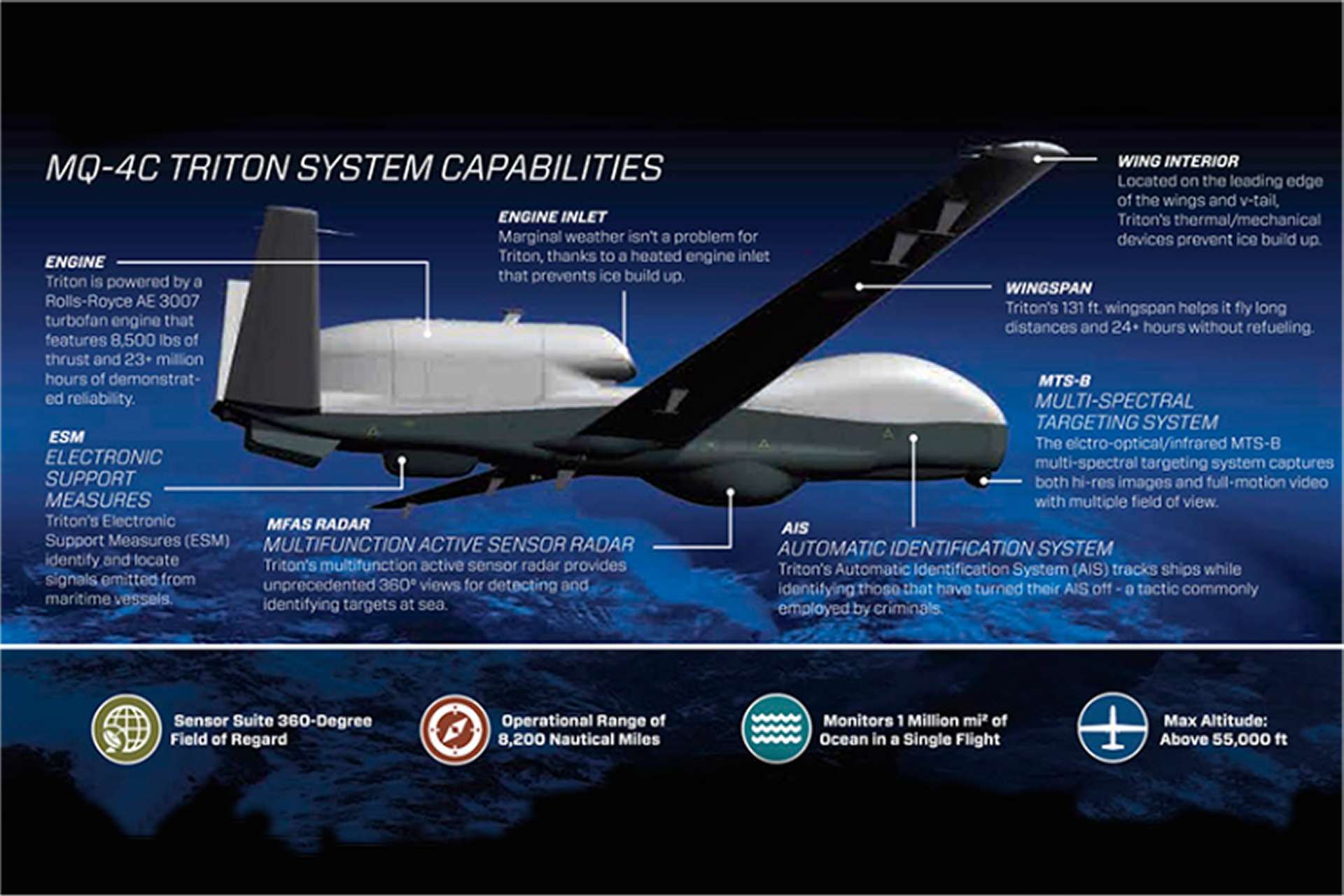Breaking News
Australia Welcomes First MQ-4C Triton Unmanned Aerial Vehicle.
On July 31, 2024, the Australian government officially unveiled Australia’s first MQ-4C Triton Remotely Piloted Aircraft System, dubbed ‘AUS 1’. The unveiling ceremony took place at RAAF Base Tindal in the presence of the Deputy Prime Minister.
Follow Army Recognition on Google News at this link

Australia MQ-4C Triton Unmanned Aerial Vehicle officially dubbed AUS 1
(Picture source: Australia MoD)
The MQ-4C Triton, a high-altitude, long-endurance aircraft, is designed to provide continuous surveillance of Australia’s maritime approaches. It will complement the crewed P-8A Poseidon fleet operated by the Australian Defence Force (ADF), forming a ‘family of systems’ aimed at enhancing intelligence, surveillance, and reconnaissance capabilities for defense operations.
The four MQ-4C Triton aircraft will be stationed at RAAF Base Tindal in the Northern Territory and operated by the reformed No. 9 Squadron of the RAAF, based at RAAF Edinburgh in South Australia.
This project represents a substantial investment of $900 million in the Australian industry. The investment covers the construction of facilities, network integration, engineering, logistics, component manufacturing, and maintenance support services.
Additionally, the Department of Defence has signed an interim maintenance support contract valued at $220 million with Northrop Grumman Australia. This contract will create 110 highly skilled technical jobs in South Australia and the Northern Territory, thereby strengthening local industry and supporting the regional economy.
The Deputy Prime Minister emphasized the importance of this program for national security, stating, "The MQ-4C Triton is a significant advancement for our surveillance and reconnaissance capabilities. It will play a crucial role in protecting our maritime borders and ensuring the security of our nation."
The MQ-4C Triton is capable of flying at very high altitudes for extended periods, providing uninterrupted surveillance coverage. This capability is essential for a country with a vast maritime area to monitor.
The introduction of the MQ-4C Triton marks a significant step in enhancing Australia’s defense capabilities, ensuring that the RAAF is equipped with the most advanced technologies to address contemporary security challenges.
The MQ-4C Triton is an advanced unmanned aerial vehicle (UAV) developed by Northrop Grumman specifically for the United States Navy. It is designed to carry out long-duration surveillance and reconnaissance missions in maritime environments. The Triton has impressive capabilities that enable it to operate at high altitudes, remain in the air for over 30 hours, and reach speeds of up to 330 knots.
One of the key features of the Triton is its powerful surveillance sensor, the AN/ZPY-3 Multi-Function Active Sensor (MFAS). This X-band AESA radar provides a 360-degree field-of-regard and can survey large areas of sea and land, covering millions of square miles within a 24-hour period. It is also capable of operating in all weather conditions, ensuring target identification regardless of the environment.
The Triton is equipped with advanced technology to automate target classification. It can capture high-definition radar pictures and use the onboard Automatic Identification System (AIS) to classify targets without human intervention. This automation reduces the workload for operators who only need to set the operating parameters of the aircraft.
In addition to its capabilities at high altitudes, the Triton has the ability to descend rapidly to lower altitudes. It is built with a robust fuselage to withstand potential hazards such as hail, bird strikes, and lightning.
At lower altitudes, the Triton utilizes the Raytheon MTS-B multi-spectral EO/IR sensor, which enhances its surveillance capabilities with laser designation, pointing, and range finding features. It can also stream live video to ground forces.
The Triton is powered by a Rolls-Royce AE 3007 turbofan engine, providing 8,500 pounds of thrust and demonstrating over 23 million hours of proven reliability. Triton's Electronic Support Measures (ESM) identify and locate signals emitted by maritime vessels, thereby enhancing its detection and surveillance capabilities.
Triton's multifunction active sensor radar offers unparalleled 360° views, enabling the detection and identification of sea targets with great precision. Triton's Automatic Identification System (AIS) tracks ships and identifies those that have turned off their AIS, a tactic often used by criminals. The electro-optical/infrared multispectral targeting system (MTS-B) captures high-resolution images as well as full-motion videos, offering multiple fields of view.
Triton is equipped with thermal/mechanical devices on the leading edge of the wings and V-tail, as well as a heated engine inlet to prevent ice build-up. These devices enable it to fly in marginal weather conditions without issues.
With a wingspan of 131 feet, Triton can cover long distances and stay airborne for 24 hours without refueling. It can reach a maximum altitude of over 55,000 feet and has an operational range of 8,200 nautical miles. In a single flight, Triton can monitor an area of 1 million square miles of ocean.

Northrop Grumman MQ-4C Triton Unmanned Aerial Vehicle (Picture source: Northrop Grumman)


























